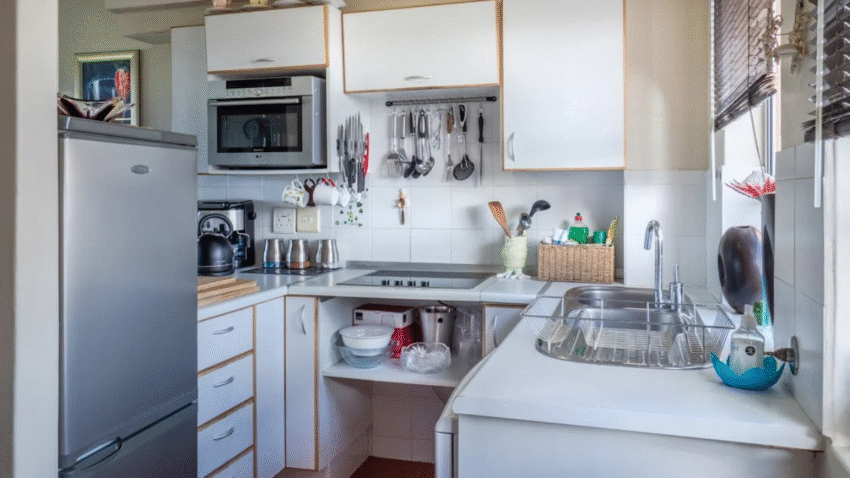Introduction
Want to add bold flavor and vibrant aroma to your meals without reaching for the salt shaker? You’re in the right place. In this guide, you’ll learn how to use kitchen herbs in cooking to elevate everything from simple scrambled eggs to elaborate roasts. Whether you’re a beginner or home cook looking to upgrade your seasoning game, this step-by-step kitchen guide will help you confidently use fresh and dried herbs in every dish.
Why Using Kitchen Herbs Matters in the Kitchen
Herbs do more than just garnish — they bring life, balance, and complexity to your cooking. Learning how to use herbs properly can:
- Boost flavor naturally without extra sodium or fat
- Add freshness and depth to any recipe
- Improve the visual appeal of dishes
- Support seasonal, farm-to-table cooking
- Enhance digestion and nutrition with certain herbs
From basil in pasta to rosemary on roasted potatoes, herbs can transform everyday meals into something extraordinary.
Step-by-Step Guide to Using Kitchen Herbs in Cooking
Step 1: Know Your Herbs — Fresh vs. Dried
There are two main types of kitchen herbs:
- Fresh herbs: Usually added at the end of cooking or as garnish. Examples: parsley, cilantro, basil, chives.
- Dried herbs: Best used earlier in the cooking process so they can rehydrate and release flavor. Examples: oregano, thyme, sage, rosemary.
Conversion Tip: When swapping dried herbs for fresh, use 1/3 the amount. Example: 1 tablespoon fresh = 1 teaspoon dried.
Step 2: Match the Herb to the Dish
Each herb has its own flavor profile and works best in certain types of dishes.
Common Herbs and How to Use Them:
- Basil: Sweet and aromatic; perfect for tomato-based sauces, pasta, and pesto.
- Parsley: Mild and fresh; ideal for salads, dressings, and garnish.
- Cilantro: Bright and citrusy; great in tacos, salsas, and curries.
- Rosemary: Woodsy and strong; pairs well with roasted meats, potatoes, and bread.
- Thyme: Earthy and subtle; perfect in soups, stews, and marinades.
- Oregano: Pungent and slightly bitter; commonly used in pizza, pasta, and Greek dishes.
- Chives: Oniony and light; great in eggs, dips, and baked potatoes.
- Sage: Warm and peppery; excellent in stuffing, brown butter sauces, and poultry dishes.
- Dill: Fresh and slightly tangy; pairs well with fish, pickles, and yogurt sauces.
Kitchen Insight: Start with small amounts and taste as you go — herbs should enhance, not overpower.
Step 3: Add at the Right Time
Timing is everything when using herbs in cooking.
- Fresh soft herbs (like basil, parsley, cilantro): Add near the end of cooking or just before serving to preserve flavor and color.
- Fresh woody herbs (like rosemary, thyme, sage): Add early in the cooking process to infuse flavor throughout the dish.
- Dried herbs: Add at the start or during simmering so they can rehydrate and blend into the food.
Pro Tip: Crumble dried herbs between your fingers before adding to release their oils and aromas.
Step 4: Chop and Store Herbs Properly
For fresh herbs:
- Rinse under cool water and pat dry with a towel.
- Remove tough stems and chop finely using a sharp knife.
- Store in the fridge in a damp paper towel or herb saver to extend shelf life.
For dried herbs:
- Store in airtight containers away from heat and light.
- Replace every 6–12 months for optimal flavor.
Bonus: Freeze excess fresh herbs in olive oil using ice cube trays to create ready-to-go herb cubes.
Step 5: Combine Flavors Thoughtfully
Herbs can be used solo or in blends. Here are a few go-to combinations:
- Italian blend: Basil, oregano, parsley, thyme
- French bouquet garni: Thyme, bay leaf, parsley (often with rosemary)
- Mexican flavors: Cilantro, oregano, cumin
- Middle Eastern dishes: Mint, parsley, dill
- Savory roast rub: Rosemary, thyme, sage, garlic
Flavor Hack: Use herbs to balance strong flavors — e.g., parsley to tone down garlic, mint to lighten lamb, or basil to sweeten tomato sauces.
Common Mistakes to Avoid
- Mistake: Overcooking fresh herbs.
Solution: Add soft herbs like basil or cilantro at the end to preserve their fresh flavor. - Mistake: Using too many herbs at once.
Solution: Stick to 1–3 herbs per dish. Too many can clash or muddle the flavor. - Mistake: Not adjusting for dried vs. fresh.
Solution: Remember the 3:1 ratio — use one-third the amount of dried herbs compared to fresh. - Mistake: Using stale herbs.
Solution: Check dried herb potency by smelling them. If there’s no strong aroma, it’s time to toss and restock. - Mistake: Chopping herbs too early.
Solution: Cut fresh herbs right before using to retain their oils and flavor.
Extra Tips & Kitchen Hacks
- Use Herb-Infused Oils: Simmer herbs in oil and strain to create flavorful cooking oils for pastas, sautés, and marinades.
- Make Your Own Herb Butter: Blend softened butter with chopped herbs and garlic. Store in the fridge for easy flavor boosts.
- Grow Your Own: A small herb garden on your windowsill or balcony provides year-round access to fresh herbs.
Product Suggestion: Herb scissors or a mezzaluna knife can speed up prep and provide a consistent chop for garnish or mixing.
Related Task: Once you’ve mastered herbs, dive into spice blending to expand your flavor toolkit even more.
Conclusion
Learning how to use kitchen herbs in cooking opens the door to more flavorful, vibrant meals. From understanding which herbs pair with which dishes, to adding them at the right time and storing them properly, these simple techniques can elevate your everyday cooking to something truly memorable. Whether you’re seasoning a roast or topping a soup, herbs are your best friend in the kitchen.
Final Tip: Don’t be afraid to experiment — the more you use herbs, the more confident you’ll become at building amazing flavor combinations.
Bookmark this guide to keep your herb game strong and your meals delicious every day!
